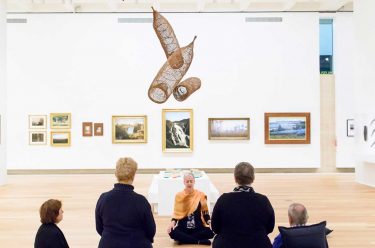
Quiet Art Collection of a Money Expert Comes to Light
Quiet Art Collection. When a money whiz named Arthur Samberg passed away in 2020, most people knew him for his big money moves. But surprise, surprise – hidden away were his family’s love for art, collecting big-shot pieces by famous artists like Jackson Pollock, Constantine Brancusi, Willem de Kooning, Roy Lichtenstein, Andy Warhol, and Edward Hopper.

Discovering Art Sales
After Samberg’s passing, the family quietly started selling some of their art in 2021. They made deals with certain galleries, like Hauser & Wirth and Friedrich Petzel in New York. Fancy pieces, like Jenny Holzer’s red granite bench and an untitled LED sign, found new homes. Friedrich Petzel got their hands on Joyce Pensato’s “Flashy Donald.”
Money Whiz Turned Art Collector
Arthur Samberg started a money company in 1998, becoming the biggest in the world by 2001, handling a whopping $15 billion in money matters. But the fun times ended in 2009 when the company closed after an investigation. Samberg settled by paying a $28 million fine and got banned from playing with money advisors.
Quiet Helpers in the Background
Samberg and his wife, Rebecca, were known for helping out with money, supporting big Jewish groups and schools. But they weren’t shouting about their art collection. Even though they supported cool groups like Jazz at Lincoln Center and the Jacob Burns Film Center, and Rebecca was part of the Katonah Museum of Art, they never made it to the ARTnews Top 200 Collectors list.
Art as Smart Money, Not Just for Show
The Sambergs’ low profile and their secret art stash suggest they saw art more as a smart investment than a way to get famous in museums. Surveys say only 10 percent of rich collectors call themselves ‘investors.’
Art Market Changes and Fancy Estates
The art market is getting a bit cooler, with people being more careful about buying big pieces. Now, auction houses are turning to rich people’s estates as a big business move. Recent reports say these houses are having trouble finding enough estates, so they’re digging into private collections for special pieces, sometimes selling them for less to get people interested.
Secrets in Money Papers
Papers from 2015 spill some secrets about the Sambergs’ art. Seven pieces, including a Brancusi and a Lichtenstein, were used as fancy money promises to get a loan from Bank of America. Later, these pieces sold for millions.
Hiccups in Art Deals
Even with their cool art, there were some problems in selling. For example, a painting by Edward Hopper sold for millions in 2021, over a year after Samberg’s passing. But the auction house partly owned it, taking it on when the Sambergs tried selling it in 2015; back then, it didn’t find a buyer.
Keeping Quiet about Deals
People involved in the money moves, like a lawyer, didn’t want to talk about it. Hauser & Wirth, one of the fancy galleries involved, also stayed quiet about what’s happening with the art stash.
In the end, it’s a story about a money expert who secretly loved art and how the art world is changing, looking more at rich people’s cool stuff.


